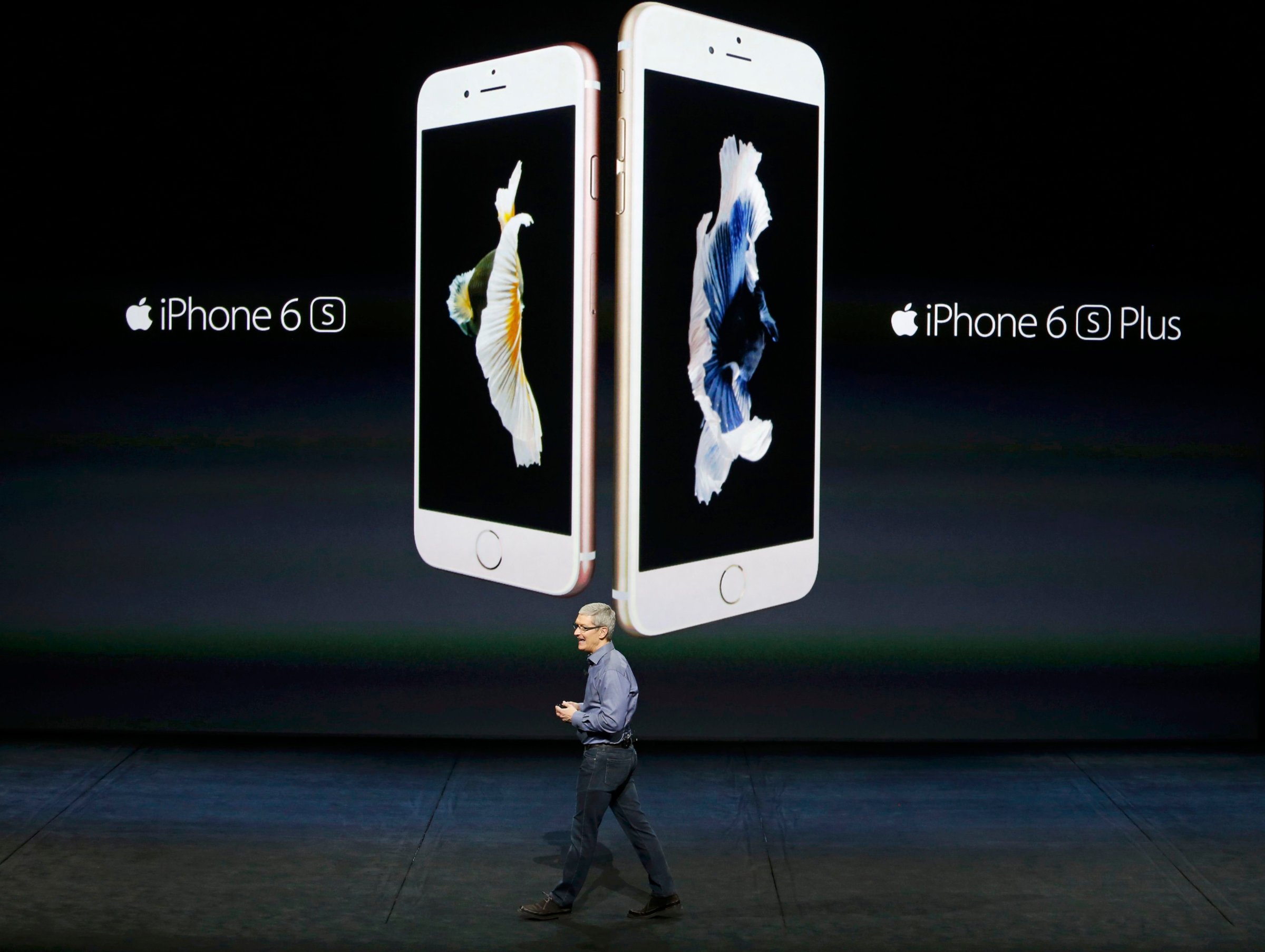
My only quibble with Apple’s new 3D Touch technology, which the company unveiled Wednesday afternoon alongside an onslaught of new iPhones, iPads and an overhauled, modestly game-ified Apple TV, is that it’s not actually 3D anything. Instead, it’s basically a finessed version of the company’s extant-on-laptops-and-smartwatches Force Touch concept applied to phones. Press a bit on the screen and you might trigger one response, or press even harder and you could trigger another. It’s a clever little haptic thing.
Call it whatever you like, 3D Touch’s inclusion in the iPhone 6s is important in that it appears to represent an interface wrinkle that could plausibly overhaul an interface (touch) that only stands to benefit from Apple’s folding in of additional (and, importantly, optional) layers.
New interfaces tend to rattle cages. No one knew quite what to make of Nintendo’s Wii after it wound up shocking naysayers by upending an entire industry. Monthly Wii sales were, at the console’s height, the closest thing the games industry’s seen to repeat mic drops.
Technology’s biggest changes tend to look upfront like the most tectonic ones, involving radical and immediately visual rethinks. That approach also usually entails enormous risks, and the penalties for missing consumer marks can be severe (see Nintendo’s Wii U as a textbook recent example). At the same time, some of the most memorable interface innovations are deceptively simple, appearing only incremental, but sliding under our fingers and into our brains until they’re so fluid and natural we’re sure they’ve always been there.
3D Touch looks, and I have to stress looks, because few have yet test-driven it, like the latter. It’s an extension of the industry’s existing touch (and Apple’s own gestural) ideas over the past six or seven years that layers in haptic control states and thresholds. It is, in its way, not unlike Sony or Microsoft or Nintendo adding extra buttons or depressible control sticks to console gamepads (as opposed, say, to something like the Wii U’s tablet gamepad, the imminent waves of VR headsets, or Microsoft’s HoloLens technology).
What might developers do with 3D Touch in a game? In a game demo at the event, a “light” touch allowed a demonstrator to smoothly zoom in or out while simultaneously aiming and shooting at enemies. By pushing harder, the demonstrator was able to trigger a heavy weapon. The demonstrator’s fingers remained in contact with the screen at all times, which, brace yourself, I’m sure the marketing departments are already plotting to sloganeer as “Play without lifting a finger!”
To be fair, and to contradict the demonstrator’s claims during the demo that this has “never been done before,” versions of this have been seen before in gaming. Clicking down on the thumbsticks of modern gamepads invokes similar zoom controls in a shooter, without your thumbs leaving the stick. And Sony’s DualShock 3 controller, you may recall, had pressure-sensitive analog buttons, checking the continuous haptic box (though I’m pretty sure almost no one used them).
The technical difference with Apple’s 3D Touch, then, is its buttonless, continuous contact pressure points, coupled to the sorts of games we’re used to seeing in the iOS App Store. That combination is definitely new.
It’s important to remember that “new” doesn’t necessarily entail better. Sometimes it just heralds a perfectly-comfortable-in-its-own-shoes alternative. Maybe 3D Touch unlocks radically new ways to interact with touch-based games. Maybe it doesn’t. If you’re a traditional developer, you’re probably already thinking about all the ways you might augment existing genre concepts, say using 3D Touch to invoke menus or mini-maps in a game that otherwise has to hide them behind discrete taps. If you think more like a Nintendo, or so many independent developers with crazy ideas that seem to come rocketing in from the ether, you’re probably wondering how you might use the interface to create a game idea no one’s seen before, say…well, this is why I’m a games critic and not a developer, because I can’t.
Either way, I’m glad, if not entirely surprised speaking as a Force Touch MacBook Pro user, to see this technology finally emerging on smartphones and tablets. Software changes perennially, often in spite of hard interface limitations, but meaningful adjustments to those interfaces, much less overhauls, are relatively rare things.
More Must-Reads from TIME
- Donald Trump Is TIME's 2024 Person of the Year
- Why We Chose Trump as Person of the Year
- Is Intermittent Fasting Good or Bad for You?
- The 100 Must-Read Books of 2024
- The 20 Best Christmas TV Episodes
- Column: If Optimism Feels Ridiculous Now, Try Hope
- The Future of Climate Action Is Trade Policy
- Merle Bombardieri Is Helping People Make the Baby Decision
Write to Matt Peckham at matt.peckham@time.com